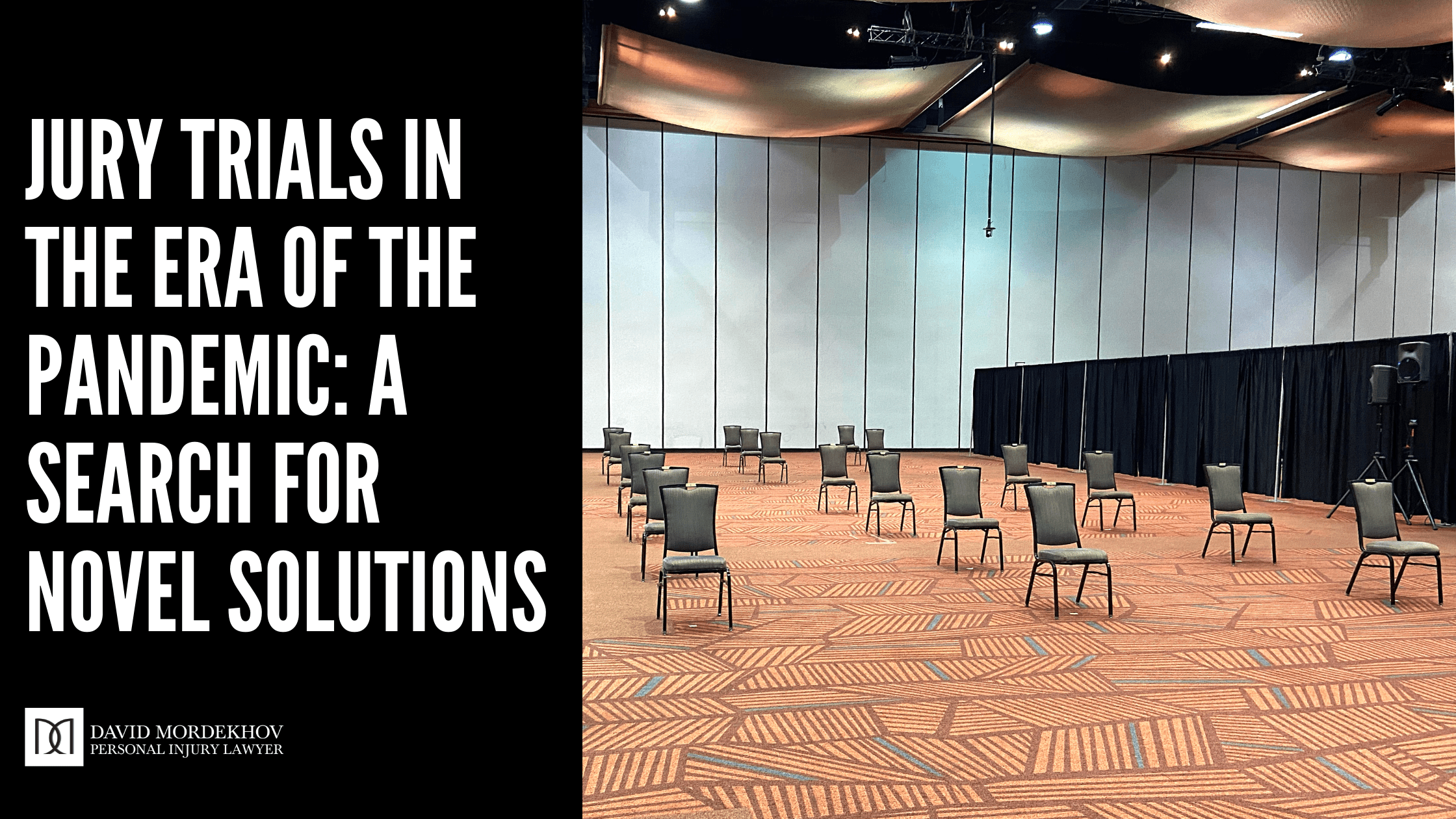Jury Trials in the Era of the Pandemic: a Search for Novel Solutions

SEATTLE, WASHINGTON. As America continues to grapple with the effects of the COVID-19 pandemic, the judicial branch is racing to re-engineer jury trials for the coronavirus era.
In the wake of national lockdown, several schools of thought emerged on resuming jury trials. First is a virtual trial by jury, where the entire case — from voir dire to jury deliberation — unfolds online. This model originated in northeast Texas where one county judge famously told his jurors: “You are at home. The courthouse came to you.” The second model is the plexiglass-facemask-social distancing jury trial where participants wear masks and stay six feet apart. The court bench is wrapped in plexiglass, and when possible, judges hold ad hoc court at off-site locations such as convention centers, gymnasiums or school facilities.
In a strong nod to the public’s vote of confidence, Washington’s justice system never came to a screeching halt due to the COVID-19. But we got dangerously close to it when on March 18, 2020, our state Supreme Court halted jury trials and suspended all nonessential court services. Maintaining an indefinite pause on jury trials until the pandemic’s end wasn’t an option, so what followed was an unprecedented joint effort — spearheaded by workgroups from the state judiciary, health authorities and University of Washington scientists — throwing their weight behind a push for innovative solutions to keep the state’s wheels of justice churning.
The result is a post-COVID jury trial system that looks dramatically different than the one we are all used to. By mid-summer, King County Superior Court was already mailing out freshly printed jury summons with a seemingly counterintuitive inscription: “Do NOT report to any court locations.”
King County is an early adopter of a “hybrid” jury trial model where jury selection is done by Zoom, but the jurors hear evidence in person. As a ringing endorsement to the feasibility of this approach, by early fall a King County jury empaneled via Zoom and seated at the Meydenbauer Center in Bellevue returned the first in Washington post-COVID multi-million-dollar verdict in an asbestos case.
Virtual jury selection allows to significantly reduce foot traffic at court facilities, but social distancing still requires an abundance of free space to hold trials. The King County Superior Court, with Presiding Judge Jim Rodgers in charge, solved this problem by re-opening its two existing courthouses for criminal trials, with only every other courtroom being occupied by a judge. The freed space is used to accommodate empaneled jurors. To handle an overflow of civil jury trials, the court administration leased space at the Meydenbauer Convention Center using $7 million in a federal COVID relief fund. The money also went towards retrofitting the existing courtrooms with plexiglass screens and new video conferencing equipment.
Opponents of the forced shift to virtual jury selection argue that Zoom reduces people to glorified talking DMV photos on a monitor, so that the camera quality or lighting angle may play a bigger role than the subtle behaviors revealing one’s true character. Trial lawyers rely on face-to-face interaction during jury selection to pick up on subtle behaviors, nuanced body language, and overall appearance of each prospective juror. But in virtual jury selection, many of those attributes are lost.
Face masks also present a set of challenges — they can easily become the bane of any trial lawyer’s existence. The fabric makes it hard to project and use voice modulation, which renders vocal tonality — an otherwise powerful oratorical tool — largely useless. The problem is not only that the speaker is muffled, but also that the audience is spread so far apart.
While a well-known adage postulates that eyes are a window of our soul, a witness whose nose and mouth are covered is hard to read. Experts say that anxiety, disgust and understanding are almost entirely displayed in the lower part of the face. Also, people who must rely on lip reading for communication, including interpreters, court reporters, and those hard of hearing, will find themselves to be seriously disadvantaged by the facemask mandate. Courts now offer transparent masks, but they could be uncomfortable and tend to fog up. Some judges use their discretion to allow witnesses to remove masks on the stand, an option authorized by the Governor.
Protecting public health while safeguarding individual rights to trial by jury is a delicate balancing act. As we are navigating the uncharted waters of this historic judicial experiment, many questions remain unanswered. Does the virtual approach to jury selection afford the same level of scrutiny? Does it dispense the same quality of justice? What happens when the federal relief money dries up? How do we maintain the public’s long-term confidence in the legal system, and how do we continue to encourage people to serve on a jury in the face of the unfolding public health crisis? Only the future will show. In the meantime, the country is hoping for a vaccine, as we enter the next flu season which scientists predict may bring a resurgence of the coronavirus.


